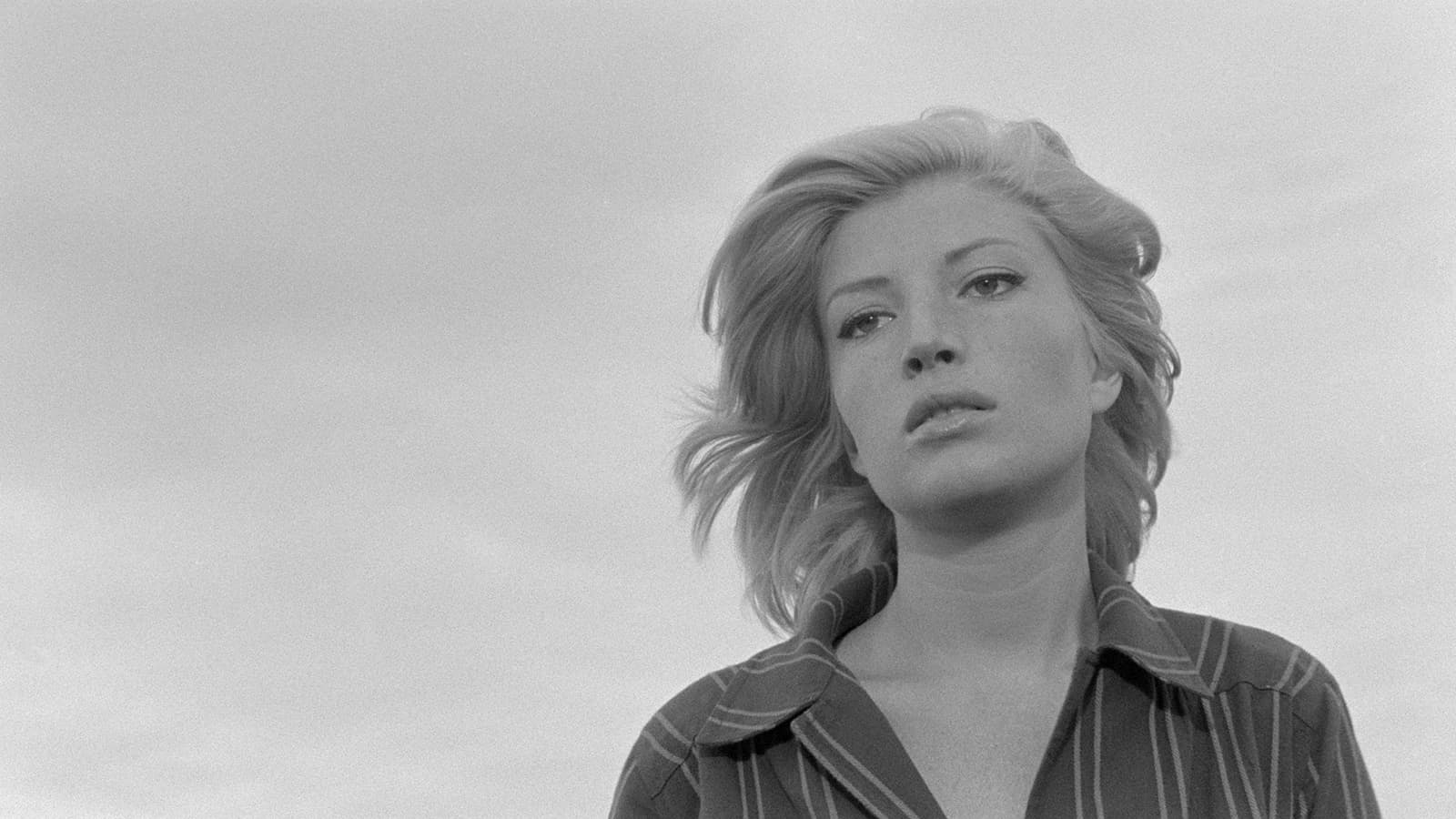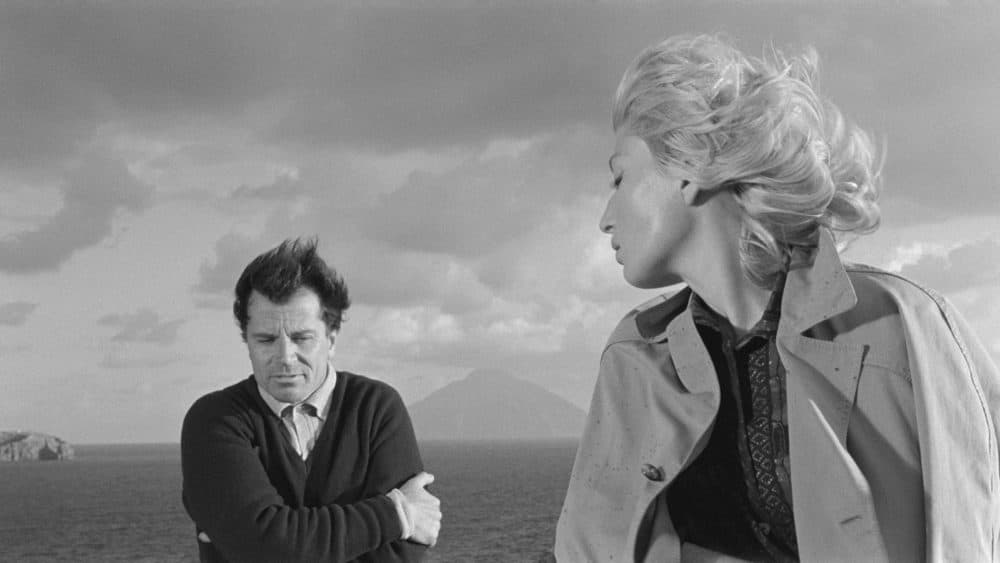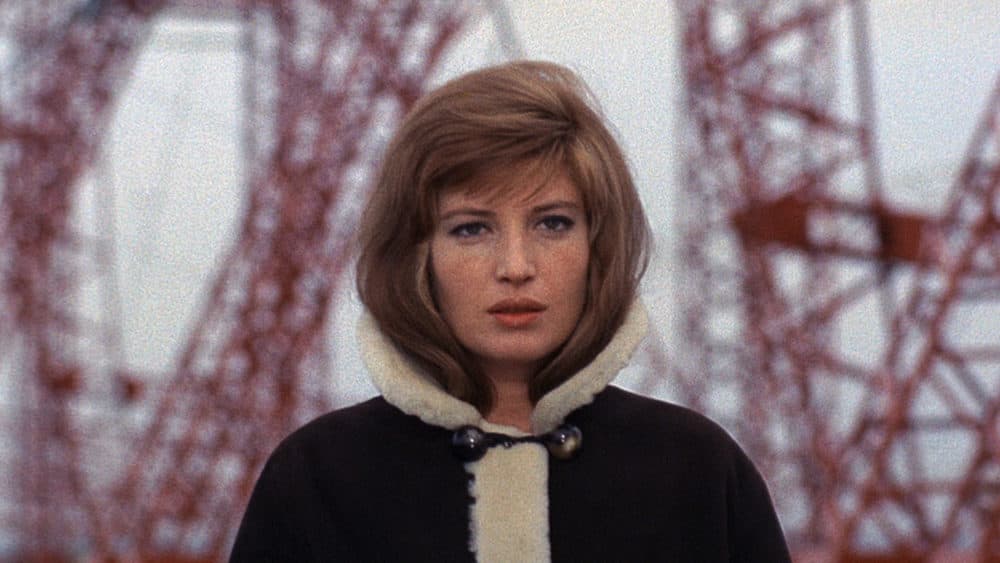Advertisement
Commentary
A tribute to Italian actress Monica Vitti at the Brattle

Often described as the “Thinking Man’s Sex Symbol,” actress Monica Vitti passed away on Feb. 2 at the age of 90. Before retiring 20 years ago, she’d spent the latter decades of her career largely focused on comedies, for which she was beloved at home in Italy. But to international audiences, Vitti forever remained what one critic called “the muse of incommunicability,” thanks to four seminal films she made with director Michelangelo Antonioni, becoming his lover and sometimes alter ego in a radical quartet of experimental narratives exploring existential alienation. In a tribute to Vitti, this week the Brattle Theatre has booked 35 mm prints of the first of these films, 1960’s “L’Avventura,” and the final, 1964’s “Red Desert,” so you can get lost in them on the big screen.
Less “va-va-voom” in her appeal than other Italian starlets of the era like Sophia Loren or Anna Magnani, Vitti’s high cheekbones and patrician air made her the perfect frontwoman for Antonioni’s adrift elite — absurdly wealthy, spiritually bankrupt wanderers who have everything and are slow to realize how little that really is. She loved to tell a story about the first time she met the filmmaker: He’d walked into a room where Vitti was sitting with her back to him and announced that she needed to be in his movies. Antonioni hadn’t even seen her face yet; she said he’d decided this simply from studying the back of her neck.

The back of Vitti’s neck does indeed get a lot of screen time in “L’Avventura,” an endlessly fascinating and intensely frustrating film that seems to fall apart while you’re watching it and never figures out how to pull itself back together again. It took me more than one viewing to understand that this is entirely by design. It starts out as a straightforward story of a restless, idle rich couple vacationing in the south of Italy with friends. Until one afternoon, on an empty Aeolian island, Anna the flighty fiancée (Lea Massari) abruptly vanishes without a trace, leaving her lover Sandro (Gabriele Ferzetti) and best friend Claudia (Vitti) to fruitlessly search for her for the rest of the picture.
Anna’s unexplained disappearance is a rupture not just in the lives of the characters but in the filmmaking itself. It blows up any conventional idea of what a story is supposed to be and leaves both the audience and the people onscreen floundering, attempting to impose some sort of meaning or purpose where there is only emptiness. As shot by cinematographer Aldo Scavarda in stark black and white, massive, imposing architecture looms large over these tiny people and the blank landscapes threaten to swallow them whole. They seem to shrink as the movie wears on and the search for Anna is forgotten. Claudia and Sandro briefly fall in love before carelessly throwing each other away, all their ardor fading into insignificance.
“L’Avventura” was greeted with a chorus of boos and hisses at the Cannes Film Festival — annoyed audience members were yelling “Cut!” during some of the lengthy, wordless interludes — sending Vitti fleeing from the auditorium in tears. But a group of 35 filmmakers led by Roberto Rossellini rallied behind the movie, petitioning for a second screening, after which it went on to win a Special Jury Prize. The New York Times’ review was so savage it was said to have made Antonioni cry, while The New Yorker’s Pauline Kael called it the film of the year. “L’Avventura” has been bitterly dividing audiences for six decades now, and the same viewer doesn’t always see it the same way twice. Nineteen-year-old me thought it was pretentious hogwash; now I think it’s a masterpiece.

Antonioni did not care to explain his pictures, often falling back on a famous quote from playwright Luigi Pirandello, “What do I know? I’m just the author.” But when pressed for the publicity materials accompanying the release of “L’Avventura” (delightfully read aloud by the director’s pal Jack Nicholson on the Criterion Collection disc), he elaborated a little, saying: “I do not believe that films are to be understood, or that we should demand that their images and subject matter should be explained. We should ask far more of a film, and something far different. A film must modify the viewer’s faculty of perception. It should teach him to blend visual image and sound and idea, so that they become a unified experience.”
Experiences don’t get much more unified than “Red Desert,” which features one of Vitti’s rawest performances as the wife of a petrochemical plant owner, slowly going mad in an apocalyptically industrial landscape. Antonioni’s first film in color — shot by the legendary Carlo Di Palma — is one of his most rigorously designed, allowing the oppressive machinery noise and belching smokestacks to slowly choke the life force out of his muse. (Even her trademark platinum tresses are dyed a mousy brown.) Recovering from a car accident we later learn was a suicide attempt, this desperate and unloved woman reaches out to a visiting manufacturing magnate (Richard Harris, dubbed in Italian), but we know how such assignations go in Antonioni movies.
Advertisement

It was a tumultuous production, with the pictorially perfectionist director going so far as to have all the trees and grass painted a sickly shade of yellow — he hated the color green — to accentuate the severity of the setting. (Harris wound up walking off the movie, but not before purportedly punching the director and getting caught climbing the Trevi Fountain while high on LSD.) By the time it was over, cinematographer Di Palma was Vitti’s new boyfriend, and she wouldn’t work with Antonioni again until their final collaboration, 1980’s “The Mystery of Oberwald.”
Yet, despite all the drama (or maybe because of it), “Red Desert” remains their most emotionally volatile work together. You can see a lot of Julianne Moore’s performance in “Safe” — not to mention “Magnolia” — in what Vitti is doing here. It’s impossible not to be haunted by her reading of the film’s final lines, after her son asks what happens when birds fly through the factory’s poisonous plumes. She tells him that by now they’ve learned not to fly around here anymore.
“L’Avventura” screens on Wednesday, March 2, and “Red Desert” on Thursday, March 3, at the Brattle Theatre.
